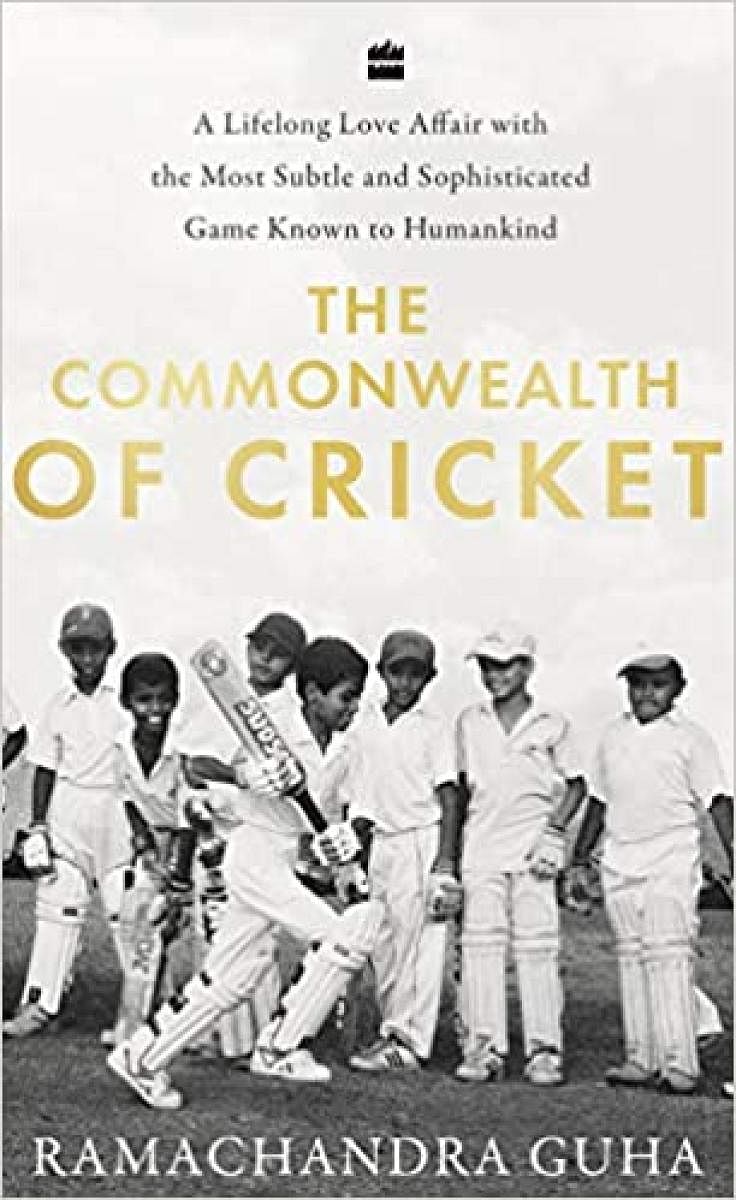
Ramachandra Guha is several personalities rolled into one. A historian and an academic of great repute, he is also an environmentalist, a social anthropologist and a chronicler of Bengaluru. Besides all this, if there is one thing that gives him immense joy, it is watching cricket, especially Tests and domestic first-class matches. His aversion to shorter formats of the game is evident, but that’s a topic for another debate for, he may have been pleasantly surprised to see the IPL generation fashion India’s Test series win Down Under recently.
This eclectic mix of interests gets reflected in his authorship of books as diverse as India after Gandhi, Savaging the Civilized or his much-acclaimed A Corner of a Foreign Field. His latest offer, titled The Commonwealth of Cricket, blends his love for this particular sport and his intimate association with it.
Delight and nostalgia
Even if there is self-referencing, this isn’t an autobiography, but is essentially a memoir that juxtaposes cricket with his life, gifting him delight and nostalgia. Cricket is the spine that links him to his roots in Dehradun, his college mates in Delhi and his uncle N Duraiswami, Durai to those familiar with Bangalore’s cricketing landscape. And cricket is the guilty pleasure that inspires his conversations at cafes or bookshops in the southern metropolis.
Guha mentions that his latest book on cricket would be his last on the sport. In a sense, it is a culmination to all that he penned before on cricket: Wickets in the East, Spin and Other Turns or A Corner of a Foreign Field.
The recurring themes that bind these books together are evident in the latest one too, be it in the warmth exhibited towards the purveyors of cricket, the anecdotal style of writing, the pen-portraits of heroes and the anguish over the game’s excess commercial muscle robbing it of its essential romance.
Guha starts with these lines: “I have no memories of the first cricket match I saw. Yet, I have heard so much about it since that I can write about it as if I did.” What he mentions is so true about the game as most of us acquire shared memories from our fathers, uncles and older cousins and even Don Bradman’s average of 99.94 is drilled into our consciousness. But there is a quiet satisfaction that could be derived from live sport and the way that particular memory acquires its own garnishing over the years. Guha is adept in the art of drawing cricketing tales from the depths of nostalgia.
‘The failed one’
When he refers to his early years in Dehradun, you also get a vivid account of how cricket thrived there while the mighty Himalayas stood in the background. For Guha, cricket is never just about what transpires between the bat and ball; it is also about context, venues, historical time-frame and social churn. His gaze is one of admiration be it for a regular club player or the giants that did service for India or other nations. A cricketer himself, with a self-deprecatory air, Guha refers to himself as the failed one despite the best efforts of Durai.
Even if he refers to instances in his life, be it in Dehradun, Delhi, Kolkata, overseas, or in Bengaluru, Guha sticks to cricket being his mirror. When talk veers towards college mates, former India opener Arun Lal finds mention. When veneration seeps in, it isn’t linked to gods, but to classy practitioners of cricket, like a Bishan Singh Bedi or a G R Viswanath. And even as political discord slowly rears its head between him and Durai, Guha prefers to overlook it and keep cricket as their common glue. The game above all is the theme.
Club-cricket culture
This isn’t just about an individual fitting into a larger canvas of cricket, it is also an effort to paint the sport’s evolution and its undercurrents. There are contrasts too to relish.
Guha advocates that nationalism has no role in the love for sport, but in the same breath, he doesn’t deny his parochialism when it comes to provinces or the hyper local. Karnataka is an enduring favourite and Friends Union Cricket Club holds a special place in his heart. Read this book to know about the club-cricket culture in the Bengaluru.
But, this isn’t entirely about an outsider enumerating about the game’s luminosity. This is also about him briefly becoming a reluctant insider in the BCCI’s Committee of Administrators (CoA) and getting an up-close view, warts and all. Despite his immense admiration for champions as varied as Sunil Gavaskar and Rahul Dravid, Guha does speak about conflicts of interest shadowing players and administrators, and that does leave him with a bitter-sweet experience.
Above all, this is a book that highlights how knowing cricket means that you could forge a bond with a Pakistani fan in Europe, and also partake in the reflected glories of a well-executed cover drive or a googly. This is about a historian finding his light touch while dwelling upon a game, which has gone beyond its British legacy and has seeped into India’s soul.